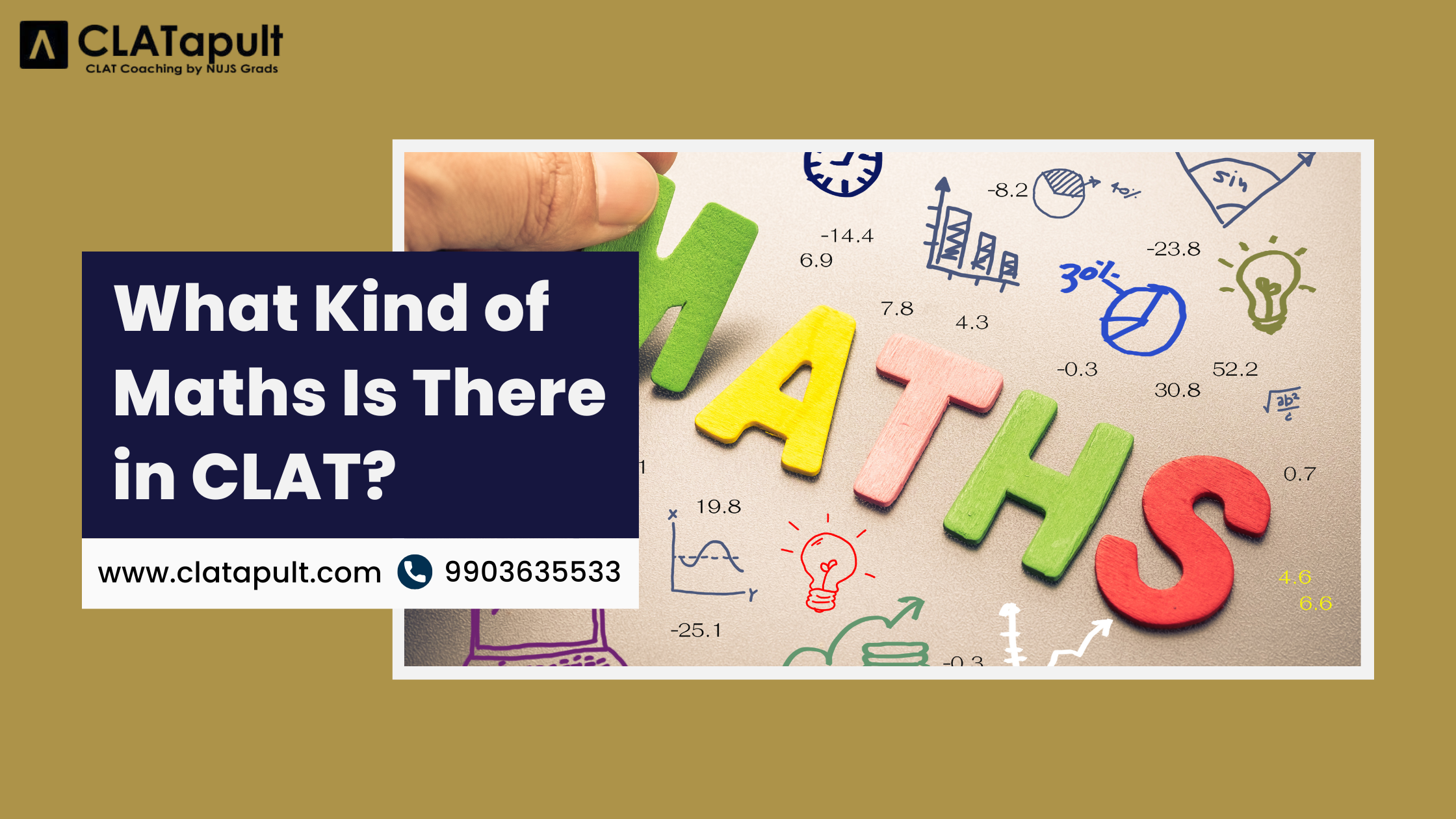
What Kind of Maths Is There in CLAT?
Preparing for CLAT can feel overwhelming, and one of the biggest questions students ask early on is “What kind of Maths is there in CLAT?” Since the exam keeps evolving, understanding the exact nature and difficulty level of the Maths section can help you plan your approach strategically. In this guide, we’ll break it down in a simple, practical way so you know exactly what to expect when it comes to Maths in the CLAT exam. By the end of this blog, you’ll have full clarity on what kind of Maths is there in CLAT and how you can prepare efficiently.
Overview: What Kind of Maths Is There in CLAT?
Here’s a quick snapshot of what the CLAT Maths (Quantitative Techniques) section typically includes:
- Focuses on Class 10–level Maths, mostly fundamental concepts.
- Questions are based on Data Interpretation, graphs, tables, and short caselets.
- Tests your logical application, not complex calculations.
- Involves around 10–13 questions in most years.
Why Aspirants Ask “What Kind of Maths Is There in CLAT?”
Students preparing for law entrance exams often wonder about the CLAT Maths portion because:
- They want to understand whether advanced Maths is included.
- Many aspirants come from non-Maths backgrounds and feel anxious.
- They need clarity on how much time to allocate to the Quantitative section.
- They’re unsure if they need coaching or if self-study is enough.
- They want to know how scoring the section is, compared to others.
This is why “what kind of Maths is there in CLAT” is one of the most repeatedly searched queries among CLAT aspirants.
Topics Covered in CLAT Maths (Quantitative Techniques)
Below are the most important chapter areas from which CLAT usually picks its questions:
- Ratios and Proportions
- Percentages
- Averages
- Time, Speed, Distance
- Time and Work
- Simple & Compound Interest
- Profit & Loss
- Fractions and Decimals
- Data Interpretation (bar graphs, tables, charts)
The exam focuses more on your ability to interpret data and draw correct conclusions rather than formula-heavy or calculation-intensive problems.
Tips and Strategies to Master CLAT Maths
1. Build Conceptual Clarity
Stick to Class 10-level basics. You don’t need advanced formulas. Solid fundamentals are enough.
2. Practice Data-Based Sets Regularly
Since most questions come in sets, solving DI frequently helps you get faster and more accurate.
3. Avoid Lengthy Calculations
CLAT rewards smart work, not complicated methods. Learn shortcuts and approximation techniques.
4. Focus on Accuracy
Maths can be extremely score-friendly if you avoid silly mistakes. Recheck values and units quickly.
5. Solve Mock Tests Consistently
Mocks train you to handle pressure and improve your time management. Analyse every wrong answer.
Why Choose CLATapult for CLAT Preparation
Choosing the right CLAT coaching institute can make a massive difference, especially for students worried about the Maths section. Here’s why CLATapult stands out:
-
Training by NUJS Grads: Learn from mentors who understand the exam inside-out.
-
Dedicated Quant Faculties: Specialists who simplify Maths for even the most anxious learners.
-
Comprehensive Study Material: 31+ modules, 300 Sectionals, 60–120 mocks depending on course.
-
Live + Recorded Maths Lectures: Access anytime, anywhere through our student portal.
-
Doubt Support 7 Days a Week: WhatsApp, Telegram, Facebook groups for constant help.
CLATapult’s structured preparation ensures that even students who fear Maths start scoring confidently within weeks.
Final Thoughts
Understanding what kind of Maths is there in CLAT helps you prepare with clarity and confidence. The Quantitative Techniques section is simple, scoring, and based entirely on basic concepts. With proper guidance, consistency, and smart strategies, this section can easily become your strength. CLATapult’s expert-designed modules, detailed practice sets, and personalised mentoring ensure that your journey towards mastering CLAT Maths becomes smoother, faster, and more meaningful.
FAQs: What Kind of Maths Is There in CLAT?
1. What kind of Maths is there in CLAT?
CLAT includes basic Class 10-level Maths focused mainly on Data Interpretation and arithmetic topics.
2. Is the Maths section difficult in CLAT?
No, the Maths section is moderate and scoring if your basics are clear.
3. How many questions come from Quantitative Techniques in CLAT?
Usually around 10–13 questions, sometimes in 2–3 sets.
4. Do I need coaching for the Maths section?
Coaching helps if you’re weak in fundamentals, need structured guidance, or want to improve speed.
5. Will there be higher-level Maths in CLAT?
No advanced Maths from Class 11–12 is included. Only basic arithmetic is tested.
6. What are the best books for CLAT Maths?
Books that cover Class 10 basics, DI sets, and CLAT-focused practice modules are ideal.
CLATapult Centers Across Kolkata
We’re based in Kolkata, but students join us from all over India via our online coaching and crash courses.
Gariahat (South Kolkata) Center
161/7 C, Rash Behari Avenue
Kolkata – 700019
Landmark: Gariahat Crossing
Beside Khadim’s and Bank of India
Ph:+91 990 363 55 33
Ultadanga – Salt Lake Center
BD 30, first floor,
near Tank no 4, Sector 1, Bidhannagar,
Kolkata, West Bengal 700064
Ph: +91 990 363 55 33
Call us anytime at +91 9903635533
Or email us: kolkata@clatapult.com
